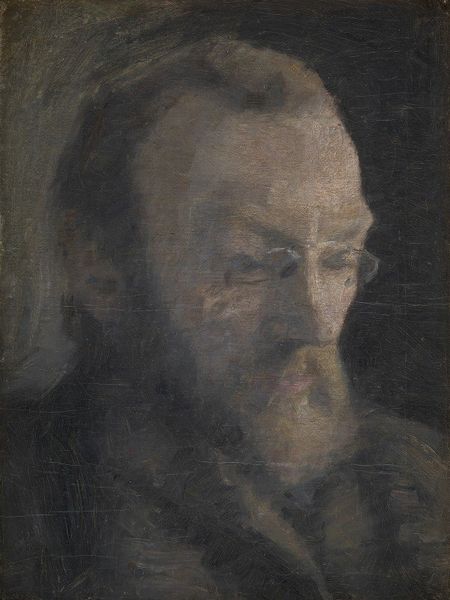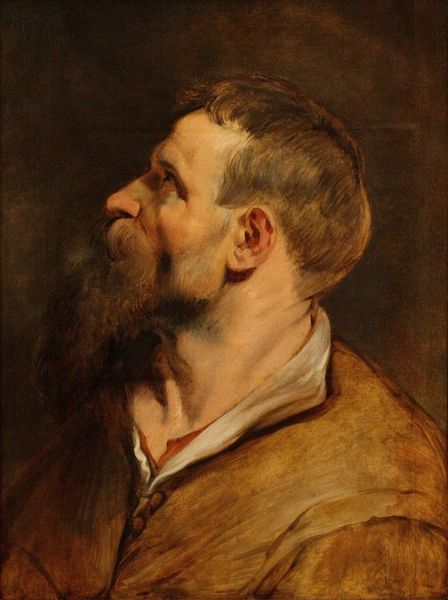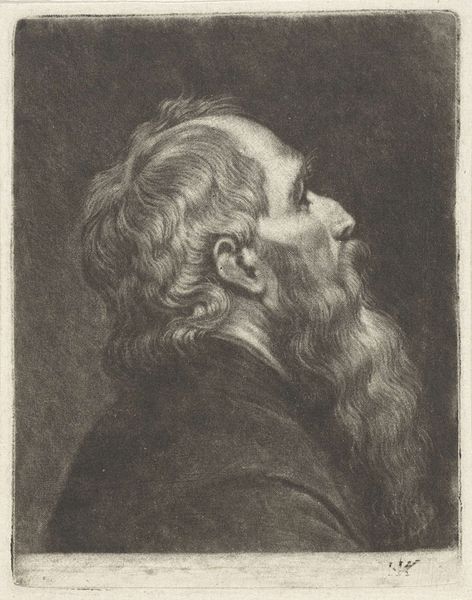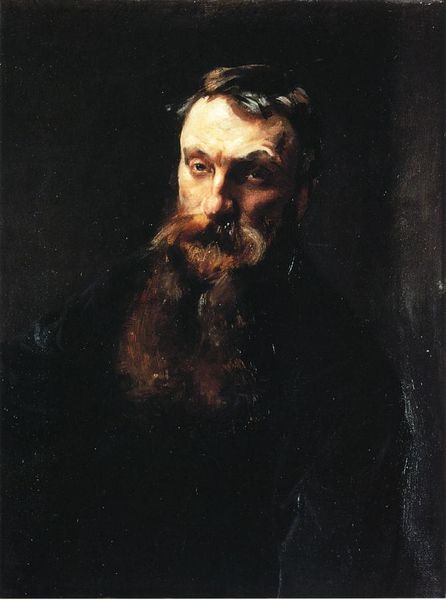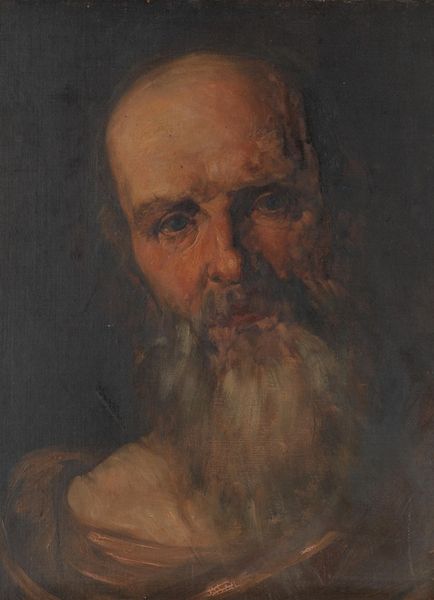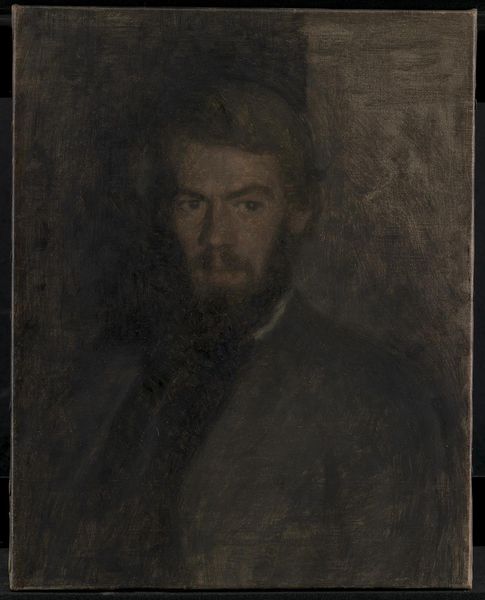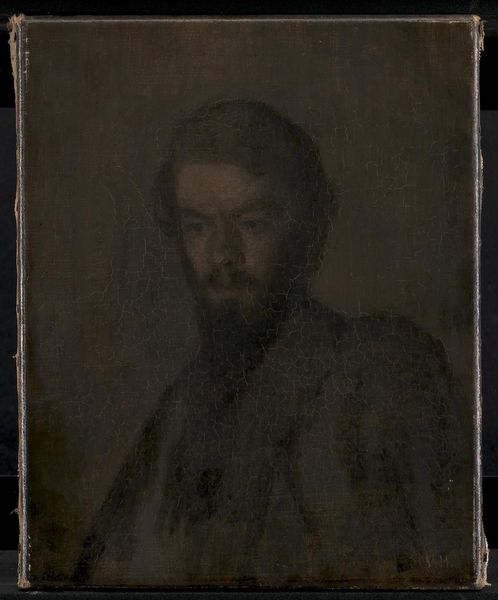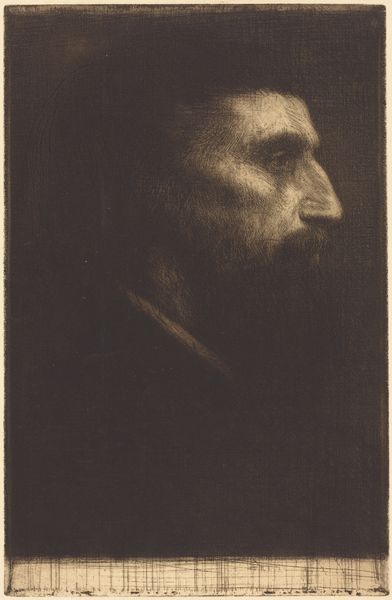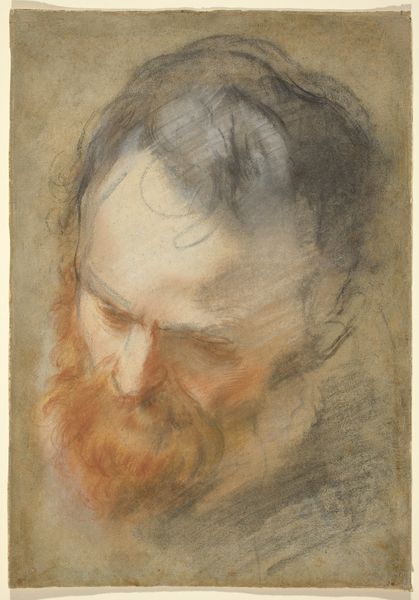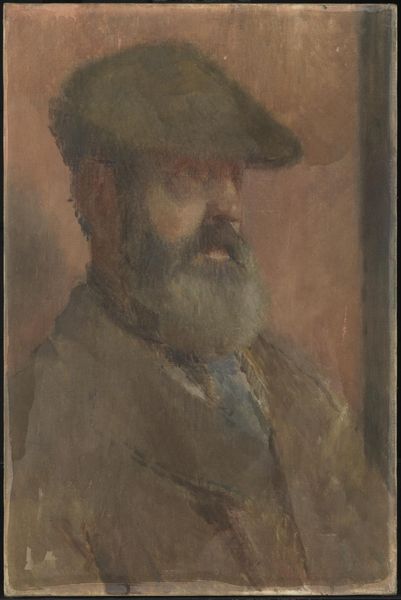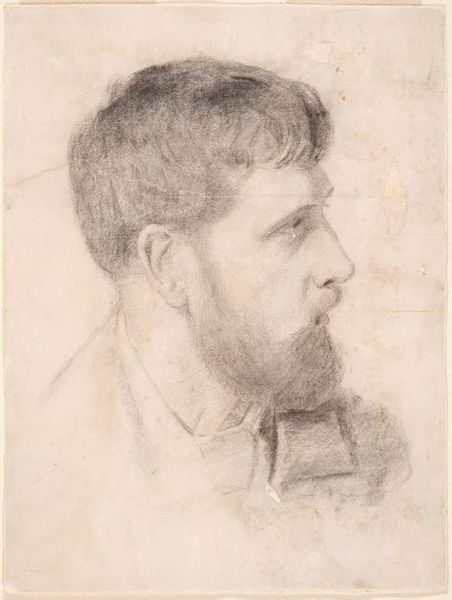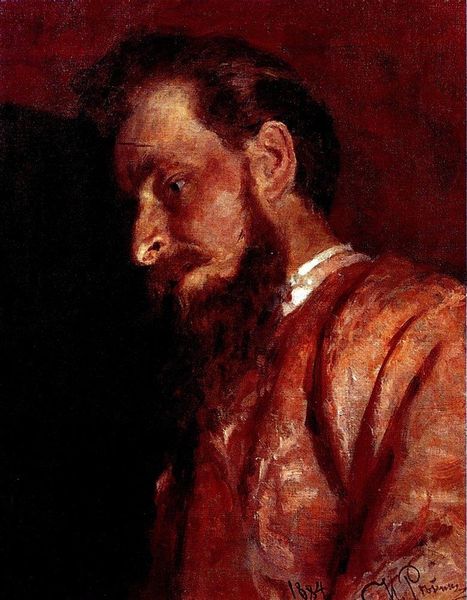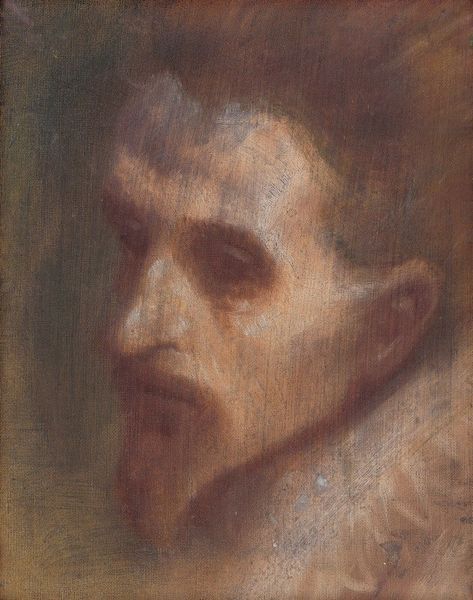
painting, oil-paint
#
portrait
#
figurative
#
painting
#
oil-paint
#
oil painting
#
romanticism
#
history-painting
Copyright: Public Domain: Artvee
Curator: I’m drawn to the muted palette, almost melancholic, in this work. It immediately evokes a sense of historical gravitas. Editor: This is "Portrait d'homme," painted in the 19th century by Pierre Puvis de Chavannes. It's an oil painting, seemingly rendered with delicate strokes that nonetheless capture the subject's strong profile. Curator: Yes, and notice how his gaze is directed downwards, almost introspective. I read that as a symbol of self-reflection, quite in line with the Romantic era's emphasis on the individual and emotional depth. His beard, the cut of his coat, these become potent symbols. Editor: Precisely. His appearance speaks to bourgeois respectability, even conservatism, reflecting the social structures of the period. But, in terms of gender studies, that downward glance could be seen as an avoidance. Curator: Avoidance? I'm not certain. The painting’s lack of sharp definition, a conscious choice perhaps, lends an air of vulnerability, of mortality even. The way the light catches the bridge of his nose is almost...ghostly. The painting style softens potentially harsh implications. Editor: That's a fascinating reading, given the conservative politics he sometimes promoted! That downward glance doesn't negate the power dynamic inherently present when one holds social, class or, racial authority. It can signify submission but, perhaps on his own terms within his circles of power. The portrait operates on those various planes of influence. Curator: I appreciate your perspective. Looking at how the light plays, I almost get a photographic effect - blurring to indicate softness in memory. I see symbols of history being brought together through formal choices and personal expression. Editor: This is a reminder of the layered complexities inherent in portraiture, and how identity, class, politics, and artistic expression can collide, even in seemingly quiet depictions. Curator: Indeed. This portrait invites us to consider how external symbols reflect and sometimes obscure inner realities. Editor: Agreed. There’s a conversation between the face presented and the underlying conditions which it serves to reinforce.
Comments
No comments
Be the first to comment and join the conversation on the ultimate creative platform.
